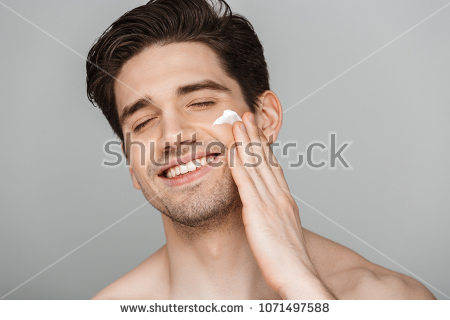Let’s be honest guys, asking and thinking about skin care is probably usually the farthest thing from your minds. Though you may take time on your overall appearance with your clothing or how you wear your hair, it may be difficult to know where to start in the realm of skincare - mostly because most skincare brands, products, and overall content seems to be geared almost exclusively towards women.
However, starting your very own skincare routine does not have to be super complicated, convoluted or confusing at all. It doesn’t have to be a million steps or products, and it certainly doesn’t have to be super time consuming. Below is a detailed five step starting point for any skincare proficiency level.
Step One: Get some sleep!
One of the best things you can do for yourself is getting some quote on quote “beautyrest.” That’s right men, beauty sleep doesn’t just affect women; men need their eight hours too. Clocking those recommended seven to eight hours will give your cells plenty of time to fix and relieve any stress or wear and tear from the day. For skin, that means working against wrinkles, fine lines, and breakouts. And don’t try to make up for a week’s worth of missed sleep on Sunday morning - that does not work. Also, no matter how hard you try, there is no such thing as storing up sleep so you can stay up longer later down the line. As nice as that sounds, that just isn’t realistic.
Step Two: Clarifying Cleanser
Cleansing your skin twice a day is neither difficult, nor does it take up a whole lot of time. All you really need to be careful of is what you are using. You want to make sure whatever you use is a clarifying cleanser; not anything abrasive or with a lot of harsh chemicals. Some ingredients to keep an eye out for that you want in your cleanser are coconut oils, aloe vera, and germanium.
Now why do you want to make sure you aren’t just washing your face in the morning? Cleansing your face removes any dirt, bacteria, and/or excess oil that has settled in your pores throughout the day. This will help to prevent clogged pores, breakouts, and will do a lot to minimize shine.
Step Three: Exfoliate Twice A Week
Now some people love this step, and others hate it. Either way exfoliation is an essential part of the skin care regimen. Once you cleanse, then twice a week (best time is at night) you should scrub away any excess dead skin cells that would clog pores and lead to potential breakouts. Exfoliating also allows for healthy skin cells to live on the surface of the skin, giving you a glowing complexion while also minimizing fine lines and wrinkles.
When looking for the right exfoliator, pick something gentle. Though you may think that because you are exfoliating that you need something super abrasive, you don’t want to use anything that has plastic microbeads or anything overly abrasive. In many cases, some exfoliators also double as cleansers.
Step Four: Moisturizer is Your Friend
Once you’ve cleansed and if it’s one of those nights where you have also buffed the skin, it’s time to hydrate and protect the skin. So now it is time to reach the final step! See this wasn’t so hard. The final product in the standard three-step regimen is moisturizer. Moisturizer delivers soothing nutrients to the skin, while also creating a barrier to shield you from complexion-compromising toxins such as smoke, smog, or other pollutants.
How to use: apply in the morning to recover any moisture lost during sleep, as well as before bed to maximize the strength of the skin-strengthening nutrients while your body’s cells regenerate overnight. If you are feeling particularly dry or in need of nutrients, you can substitute a night cream at night, for a denser, more protective barrier.
Step Five: SPF is not just for the beach!
Now this may seem silly, but SPF is not just for those days you are going to be outside all day. SPF actually does a lot for skin. UV rays from the sun are known to mutate the cells in your skin, whether the sun is out or not. These UV rays can lead to a whole host of skin problems such as sun spots, wrinkles, sun burns, dry patches, moles, and even cancer. It’s important to shield your skin from these rays with SPF, whether it’s packed inside your daily moisturizer or by mixing the two products together.
If you’re only outside during the commute, then a lightweight SPF should suffice, but if you hit the beach or are outside in direct light for extended periods of time (an hour or more), or if you are super pale and lack any melanin in your skin like me, then you should consider something higher—SPF 30 is a safe bet for most everyone for most everyday situations.
*Information found on Men’s Journal and GQ Magazine.





























